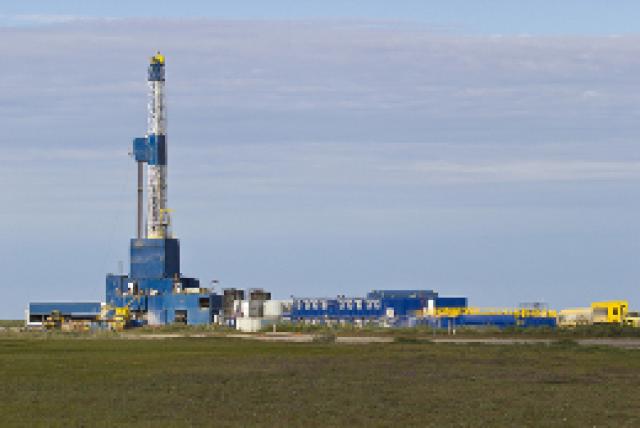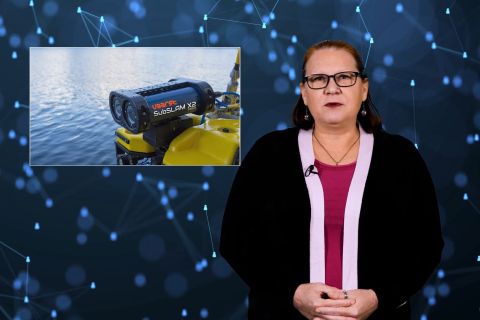
A proposal by the US Department of Interior (DOI) could open millions of acres to oil and gas leasing in the National Petroleum Reserve in Alaska (NPR-A), while also protecting animals and coastal resources unique to the area.
The preferred plan, touted this week by Secretary of the Interior Ken Salazar, is a modified version of one of the originally presented four alternatives being considered. The plan would offer 11.8 million acres of land, or about 52%, of the NPR-A for development. The area is believed to have 549 MMbbl of discovered and undiscovered oil as well as just less than 9 Tcf of discovered and undiscovered gas.
Three other alternatives would have put more acreage on the table.
• Alternative A: 13 million acres, or 57% of the NPR-A subsurface, with 723 MMbbl of oil and about 10 Tcf of gas;
• Alternative C: 17.9 million acres, or 76% of the NPR-A subsurface, with 707 MMbbl of oil and just more than 15 Tcf of gas; and
• Alternative D: 22.8 million acres, or 100% of the NPR-A subsurface, with 761 MMbbl of oil and just more than 17 Tcf of gas.
The fourth alternative, B-1, would offer 11 million acres, or 48% of the NPR-A subsurface, with 505 MMbbl of oil and just more than 8 Tcf of gas.
“This proposal would allow us to continue to expand our leasing in the NPR-A, as we have done over the last three years as part of the Obama administration’s focus on expanding safe and responsible oil and gas development, and builds on our efforts to help companies develop the infrastructure that’s needed to bring supplies online,” Salazar said in a prepared statement. “This plan also strikes an important balance by recognizing the need to protect America’s treasures in the Arctic.”
The plan puts some areas off limits to developers to preserve animal habitats on Alaska’s North Slope. The areas, according to the DOI, include Peard Bay and Kasegaluk Lagoon, for seals, polar bears, and other marine animals; Colville River, raptor nesting; and calving areas for the Teshekpuk Caribou and Western Arctic herds.
But it also allows for the possibility of pipelines and other infrastructure for future offshore oil and gas production in the Beaufort and Chukchi seas.
The preferred alternative, however, is not receiving much praise from some energy organizations, including the American Petroleum Institute (API), which issued a statement to Hart Energy following Salazar’s release of the proposal’s outline.
“While every lease sale is important, this announcement continues to leave domestic energy resources, jobs, and government revenue off the table,” said Erik Milito, upstream director for API. “The public and the oil and natural gas industry continue to support US energy development. However, the administration continues to prevent, delay, and obstruct development of these important resources and puts off jobs for another day.”
Companies are still taking advantage of lease sales in the NPR-A, having secured 17 bids covering more than 140,000 acres in December 2011, according to the Bureau of Land Management. ConocoPhillips Alaska Inc., Woodstone Resources LLC, and 70 & 148 LLC were among the companies that secured winning bids.
Plans are under way for another lease sale in the area in November.
“As the first integrated activity plan for the entire NPR-A, this will provide a roadmap to help facilitate the transition from leasing and cautious exploration to production and smart development,” acting Bureau of Land Management Director Mike Pool said in the press release.
E&P companies are faced with assessing the alternative’s potential impact when the plan is released.
Curtis Smith, a spokesman for Shell in Alaska, said the company needs to look closely at modifications made to the plan.
“We are focused on a long-term solution that balances the intended use of the National Petroleum Reserve with appropriate conservation measures,” Smith told Hart Energy.
The company continues to push forward with plans to drill two wells in the Arctic this year – one each in the Beaufort and Chukchi seas.
A draft of the NPR-A Integrated Activity Plan (IAP) and Environmental Impact Statement (EIS) containing the four alternatives was released in March. The final IAP/EIS set to include the fifth alternative – the preferred one – is anticipated for release in late 2012. Its release will trigger a 30-day review process before Salazar issues a final decision.
So far, more than 400,000 public comments have been received on the issue, according to the DOI.
Contact the author, Velda Addison, at vaddison@hartenergy.com.
Recommended Reading
TGS, SLB to Conduct Engagement Phase 5 in GoM
2024-02-05 - TGS and SLB’s seventh program within the joint venture involves the acquisition of 157 Outer Continental Shelf blocks.
2023-2025 Subsea Tieback Round-Up
2024-02-06 - Here's a look at subsea tieback projects across the globe. The first in a two-part series, this report highlights some of the subsea tiebacks scheduled to be online by 2025.
StimStixx, Hunting Titan Partner on Well Perforation, Acidizing
2024-02-07 - The strategic partnership between StimStixx Technologies and Hunting Titan will increase well treatments and reduce costs, the companies said.
Tech Trends: Autonomous Drone Aims to Disrupt Subsea Inspection
2024-01-30 - The partners in the project are working to usher in a new era of inspection efficiencies.
Drilling Tech Rides a Wave
2024-01-30 - Can new designs, automation and aerospace inspiration boost drilling results?





